
RFID makes it easier and more efficient to track and perform regular tyre maintenance. It identifies potential problems or failures before they cause a breakdown. Confidex has come out with a tyre tag, smaller than its peers and with an omni directional antenna
As the global tyre industry is witnessing rapid changes in manufacturing, distribution and usage to end of life of tyres, Radio Frequency Identification (RFID) will play a significant role in tackling many challenges posed by the growing complexity in the sector.
Demand for data collection is growing, calling for intelligent decisions and fast actions. Data on tyres helps tyre companies to improve their production efficiency, reduce rejections and even help in addressing in legal disputes, while fleet companies can manage lifecycle of tyres and operations cost.
In February this year, Confidex, a leading designer and supplier of short-range wireless identification solutions, launched the new Confidex tyre tag, which is designed for tyre traceability through the lifecycle of tyres. The tags are based on RAIN RFID/EPC global Gen2v2 RFID technology, which has global certification for passive RFID tag.
Highlights
The highlight of the Confidex tyre tag is that it is smaller than its peers and has an omni-directional antenna. “Initially, we had enquiries from two Chinese tyre manufacturers - Jiangsu General Science Technology Co and Hodo Tyres. They were looking for solutions for an embedded tyre tag technology that is different from all the other solutions available in the markets. We took two years to design, develop, and release this embedded tyre tags commercially. Our RFID tag is a bit smaller than the existing tags available in the market, having an Omni directional antenna.
Now these two Chinese companies are ready to release the mini truck tyres with our embedded RFID tags,” said Paul Broekhuizen, Executive Vice President Smart Industries at Confidex Ltd. By integrating RFID tags within the tyre during the manufacturing process, fleet operators and other end users can track tyre wear and usage. This can help to control ongoing tyre costs. RFID makes it easier and more efficient
to track and perform regular tyre maintenance, as well as identify potential problems or failures before they cause breakdown, says the company.
According to the company, its tyre tag can be fitted with a flexible position within the tyre and is 40 mm smaller than other comparable tags on the market. Its omni directional antenna provides greater flexibility for both warehouse and yard management applications. The Confidex tags offer a read range up to 3 metres or 9 feet from all directions and are compliant with the ISO 20909 and ISO 20910 standards. “The main advantage that the omni directional RFID tags provide is that you can take readings from any direction by a handled reader. You can even have a fixed reading tool in your workshop, and you need to take your vehicle near to or pass by the reader. The ratings are accurately taken. That was the key requirement of the Chinese customers too,” said Broekhuizen.
Confidex is also in discussions with major European tyre companies to test its tyre tags. Positioning Tyres come with different designs and materials, compositions and thickness, so the challenge is to fit an
RFID tag at an ideal position. Since the Confidex tyre tag is installed before the vulcanisation process, it can be placed in any position. “Customer can embed a tag at any position. But, better to check with Confidex, we can simulate how it performs in the new position,” Broekhuizen pointed out. Since the Confidex RFID tag is smaller in size compared to the other tags available in the market, with minor changes,
it can be easily fitted in the tyres that have already been into production. During the vulcanisation process, tags o through very high heat and pressure for hours and sometimes, the antenna may get damaged.
The Confidex tyre tag has a spring type of the antenna - not a typical 3D spring, but more like flexible folded wire antenna, which is 2D structure. This is more flexible and provides benefits during the vulcanisation. “Due to the spring-like design, air bubbles cannot form around the antenna, making it more flexible and sustainable during bending and stretching in the vulcanisation process,” said Broekhuizen. The tags are IP68 rated against liquids and dust and provide resistance to common chemicals and UV exposure.
The company’s RFID tyre tags have already been tested in-house and now they are being tested by European tyre companies with specific requirements. Since the embedded tyre RFID tags cannot be taken out without damaging the tyre, they are ideal for identifying counterfeit products and lifecycle monitoring. “So basically, an embedded RF ID tag helps to monitor lifecycle of tyres. This is the most ideal and complex RFID tag solution,” added Broekhuizen.
The other solution is the label type of tag, which is used for after-sales solutions. It looks like a simple label, but has an antenna too. These labels have different additives which are meant for the different materials, and the antenna design is based on the materials. Broekhuizen explained: “The rubber and steel of the tyres are very complex substances. There are always chemical reactions when you stick anything on rubber. There are chances of them peeling off and permanently bond, so we need a special kind of adhesive which are best with the rubber composites.”
During the tyre manufacturing processes, RFID labels are applied to different bags or containers of the chemicals and other ingredients. With the help of the labels and the reader on the loader, the mixing process is strictly monitored and controlled.
The third solution is barcoding, which comes with an RFID ag which is for regulatory compliance. The embedded RFID tags also help to monitor the tyres in the recycling business. “Tyres go to different countries, so it is difficult for the recyclers to understand or have data on the lifecycle. With an embedded tag, recyclers can get info on the manufacturers, location, and date of manufacturing and
other info. And with all such info, recyclers can manage their business more efficiently,” said Broekhuizen. The information on the Confidex tyre tags come up with the extended memory so additional information can be stored. “There is always fixed information on the RFID and then there is an EPC memory which can have more information.”
Broekhuizen sees growing demand for embedded RIFD tags in both developed and developing markets for different reasons. According to him, a more substantial challenge is to tackle counterfeit cases in the tyre industry, and such cases can be avoided by using RFID tags. In the developed markets, RFID will help to reduce labour costs and improve efficiency.
The company also plans to explore the penetration of its RFID tags in the OTR segment, where the total cost of ownership and lifecycle are the main drivers of the business. Tyre companies are also exploring tyre leasing business. According to Broekhuizen, huge business opportunities lie before the company as the tyre rental business model needs embedded RFID tags. With the lease model, fleet operators can bring down the operating cost by almost 50%. “Fleet companies have to use as per the usage of the tyres or per kilometre. With RFID tags, all data and monitoring can be done accurately,” he said.
Fornnax Inaugurates 12-Acre Global Hub For Recycling Innovation
- By TT News
- November 27, 2025
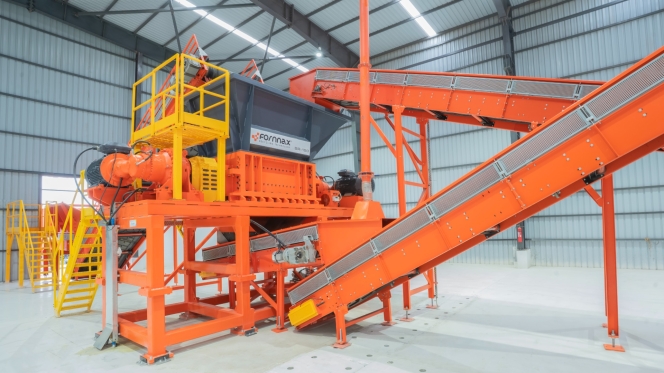
Fornnax has officially launched one of the world's largest integrated hubs for recycling innovation: a New Product Development centre and demo plant spanning over 12 acres. This facility is a critical milestone in the company's strategic vision to become a global leader in recycling solutions by 2030. It is designed to accelerate the advancement of recycling technology through a comprehensive, customer-focused approach.
The centre’s core function is its New Product Development framework, which is built upon a meticulous Gate Review Process. This system ensures precision from conception to completion. The journey begins with market research and ideation from the Sales and Marketing team, followed by a strategic review by the Leadership Team. The Design Team then creates detailed plans that are evaluated by Manufacturing, Service and Safety teams. After final approval, a functional prototype is built and subjected to a rigorous six to eight-month validation phase. The process concludes with design optimisation for mass production, officially launching the equipment for the global market. This method not just upgrades Fornnax's shredders and granulators – enhancing their capacity, energy efficiency and operational availability to 18–20 hours per day – but also validates the equipment for up to 3,000–15,000 hours under real-world conditions
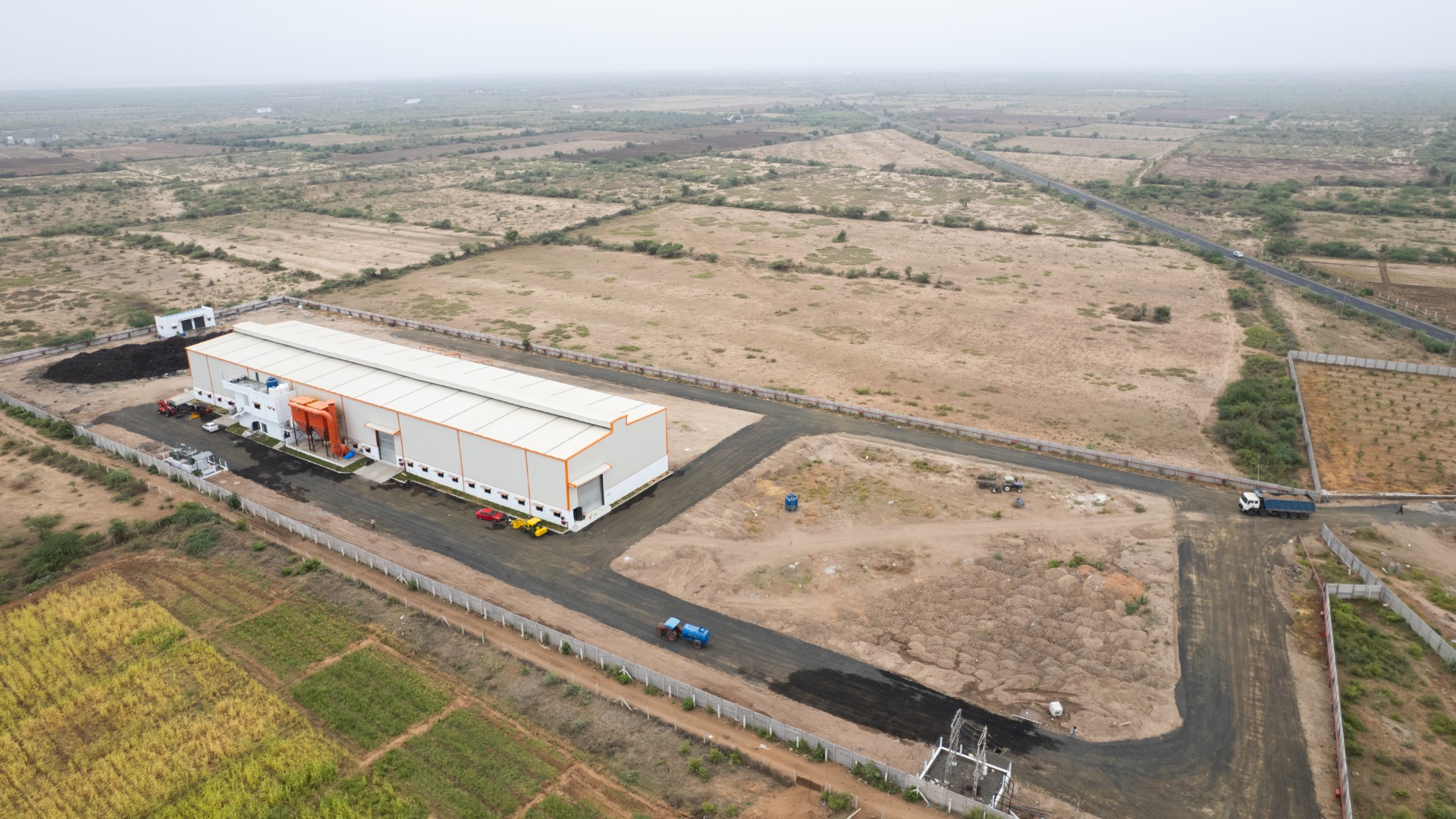
A key feature of the facility is its open-door policy for clients. Customers can bring their specific materials to the demo plant to test equipment performance across various machines and conditions, providing a risk-free environment for informed investment decisions. The centre will also drive research into emerging recycling applications, such as E-waste, cables and lithium-ion batteries, where specialised engineering teams will conduct feasibility studies to design tailored solutions.
Beyond technology, the facility includes an OEM training centre dedicated to developing a skilled workforce. The programme trains operators and maintenance engineers, who gain hands-on experience before being deployed to support Fornnax's customer base. The company will also deliver comprehensive corporate training to domestic and international clients, empowering them with the expertise for optimal plant operation and maintenance. By uniting R&D, testing and training under one roof, Fornnax is establishing a powerful foundation to scale its offerings and lead the next generation of recycling technology.
Jignesh Kundariya, Director and CEO, Fornnax, said, "Innovation in product development is the key to success of becoming a global leader. With this new facility, we now have the speed, flexibility and controlled environment to design, test and validate new technologies in just six to eight months, something that would take significantly 4–5 years at a customer site. Each machine will undergo validation according to global standards, with every critical part and assembly rigorously tested under Engineering Build (EB) and Manufacturing Build (MB) protocols. Our goal is to empower customers with clarity and confidence before they invest. This facility allows them to test their own materials under real-world conditions, compare machines and see results firsthand. It’s not just about selling equipment; it’s about building trust through transparency and delivering solutions that truly work for their unique needs.”
Smithers to Expand Rolling-Resistance Testing Capabilities in China
- By TT News
- November 21, 2025
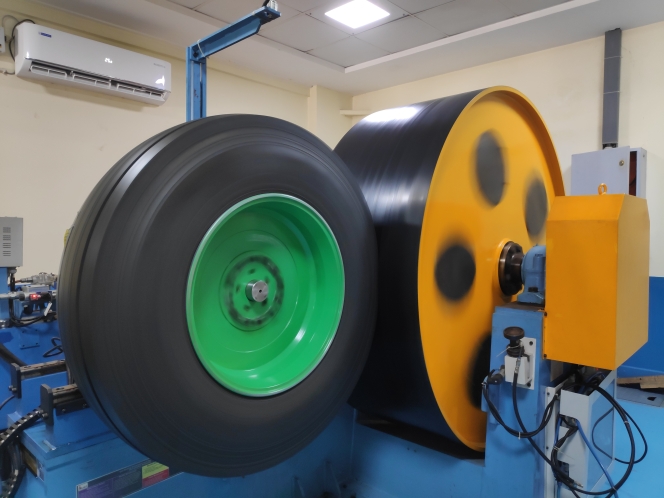
Smithers, the US-based testing and consulting group, is expanding its tyre testing operations in China with three new capabilities designed to better replicate real-world driving conditions. The investment will enhance the company’s rolling-resistance testing at its Suzhou tyre and wheel centre, strengthening its offering to global carmakers and tyre manufacturers.
The new features focus on factors that can influence vehicle energy loss, range, and overall efficiency—a growing concern as regulators tighten standards and EV makers push for longer driving range.
One new capability will allow rolling-resistance testing to be carried out with variations in slip and camber angles for passenger car and light truck tyres. Standard tests are performed at zero degrees, but even small changes in wheel alignment or body movement during real driving can affect energy consumption. The enhanced system lets customers study these effects and refine tyre designs accordingly.
Smithers is also adding high- and low-temperature rolling-resistance testing for truck and bus tyres, an extension of the temperature-controlled testing it introduced for passenger tyres in 2022. The company said demand has risen as manufacturers look to understand how cold weather affects range—a key issue for electric commercial vehicles.
A third new service will allow tyres to be tested together with chassis components such as half-shafts and brake discs. This gives OEMs independent data on how these parts contribute to overall resistance, helping them to identify where energy is being lost and to fine-tune vehicle efficiency.
All three capabilities are expected to be online by 1 December 2025.
“Smithers is seeing increased demand on a global scale for testing of tires and vehicles that more closely mimics real-world conditions,” said Derek Read, Vice President of Asia Pacific / Global Development, Materials Science and Engineering, Smithers. “These new capabilities are strategic investments into the refined, scenario-based testing our clients require to improve both tire and tire-chassis-vehicle system performance.”
Autonomous Robots Transform Continental Retreading Operations
- By TT News
- November 19, 2025
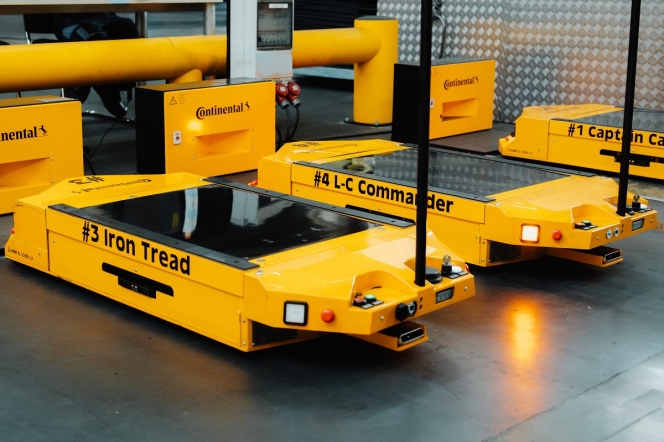
Continental's Hannover-Stöcken plant is pioneering a new era in sustainable manufacturing by seamlessly integrating advanced robotics into its core operations. Since their deployment in March 2025, a team of seven autonomous mobile robots (AMRs) has become the central nervous system for material transport, fundamentally reshaping the workflow for retreading truck and bus tyres.
This shift to automation has profoundly changed the human role on the production floor. Employees, once tasked with the physically strenuous job of manually moving heavy tyres using cranes and trolleys, are now focused on more cognitively demanding responsibilities. Their expertise is directed towards machine setup, process oversight and meticulous quality control, making their work more ergonomic and skilled.
The AMRs operate with sophisticated independence, navigating the production hall using a fusion of sensors, 360-degree cameras and AI-driven software. They efficiently ferry ‘green’ tyres between critical stages: from the building machine, where fresh rubber is applied, to the curing presses for vulcanisation and finally towards inspection. This automated coordination is digitally linked to the plant's order system, allowing for dynamic routing to optimise workflow and manage capacity.
This initiative is a cornerstone of Continental's global strategy to modernize tyre production through digitalisation and smart automation. The success in Hannover has already inspired the rollout of similar robotic solutions across the company's international network, from North America to Asia. The move aligns perfectly with the plant's sustainable mission, which is the ContiLifeCycle process itself. This process breathes new life into used tyre casings by carefully inspecting them, applying new tread rubber and vulcanising them to create a product that performs like new. The environmental benefit is substantial, as up to 70 percent of the original tyre's material is reused, significantly conserving resources.
The human element was crucial to the project's success. Continental ensured widespread employee acceptance through comprehensive training and even involved the workforce in christening the robots with creative names. This thoughtful approach has cemented the AMRs not as mere machines but as valued teammates in a shared mission to make tyre production more efficient, sustainable and future-ready.
Felix Hantelmann, head of the ContiLifeCycle plant, said, “Self-driving robots have been supporting our production workflow for six months now. They handle simple, repetitive transport tasks such as moving a tyre from one point to another. The robots are directly connected to our digital order system, so they know exactly where to go and how to coordinate with each other to get there. They are a valuable addition to our daily operations and help create a safe, efficient and ergonomically optimised production environment.”
Continental Deploys Vacuum Tech For Real-Time Tyre Wear Particle Analysis
- By TT News
- November 18, 2025

Continental's leadership in reducing tyre wear is fundamentally driven by its pioneering research into how particles are generated. A pivotal element of this strategy is the recently concluded OLRAP project, a collaboration with the Technical University of Braunschweig that broke new ground in real-world particle analysis. The research team engineered a complex experimental vehicle, outfitting it with a custom vacuum system and sensitive particle sensors. This innovative setup enabled the real-time collection and analysis of airborne particles directly at their source – the rolling tyre – under actual driving conditions. The resulting data, which for the first time correlates specific driving dynamics like aggressive acceleration and hard cornering with particle emissions, provides an unprecedented understanding of wear patterns.
This deep, data-driven insight is what directly fuels Continental's product development. By knowing precisely how and when wear occurs, engineers can make targeted optimisations to tread patterns and rubber compounds. The objective is to systematically design tyres that shed less material, thereby directly reducing their environmental footprint from abrasion. This development process rigorously maintains the critical safety and performance standards that drivers demand.
The tangible success of this research-to-development pipeline is confirmed by independent analysis, which shows Continental tyres abrade 11 percent less material than the competitor average. Furthermore, this proactive research and development strategically prepares the company for upcoming regulations like the Euro 7 standard, which will impose limits on tyre wear emissions. Beyond its own laboratories, Continental extends this commitment through cross-industry efforts, co-chairing the Tire Industry Project and contributing to public initiatives aimed at capturing tyre particles from road runoff. Through this integrated approach, Continental is leveraging fundamental scientific discovery to create more sustainable mobility solutions.


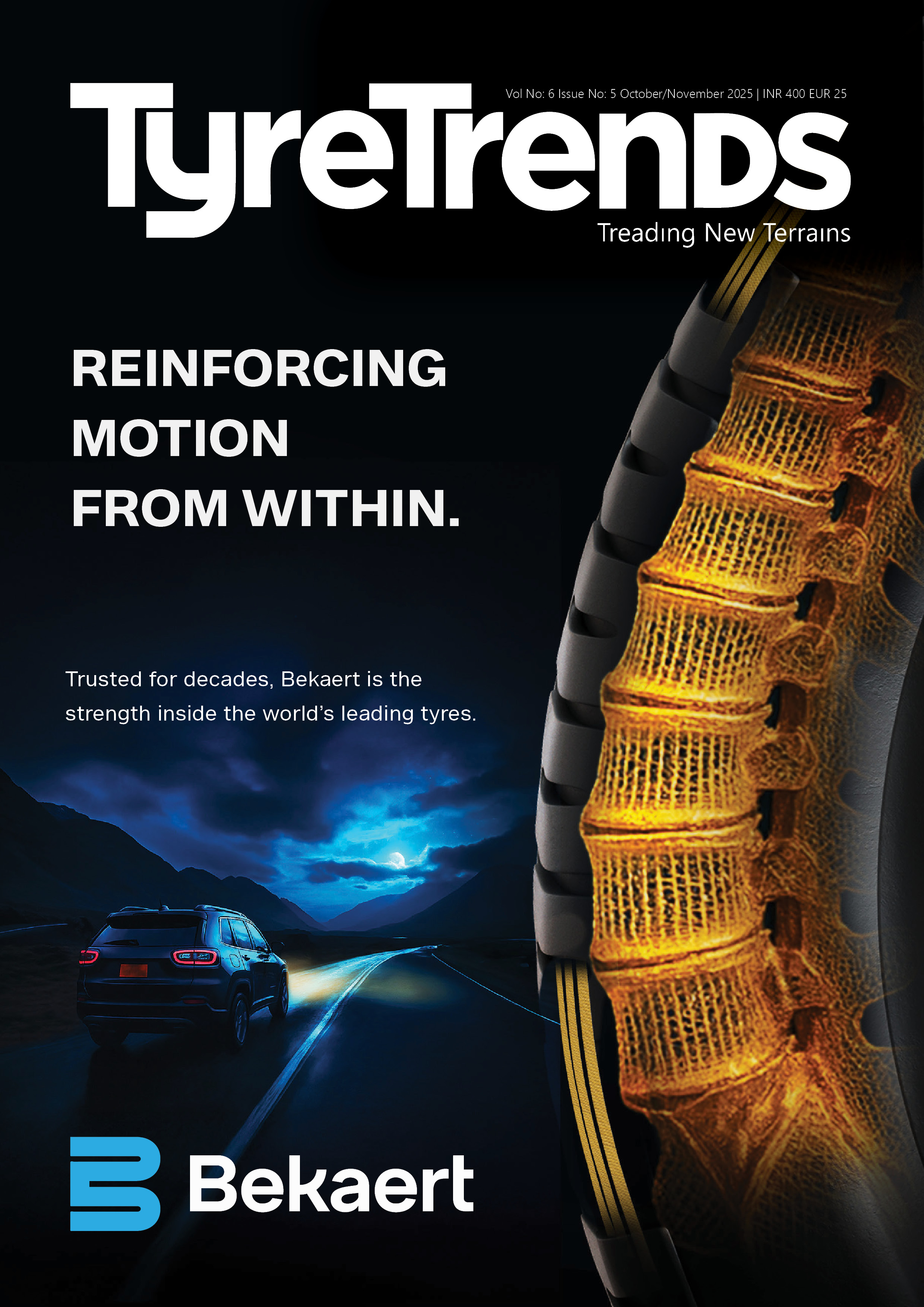




Comments (0)
ADD COMMENT